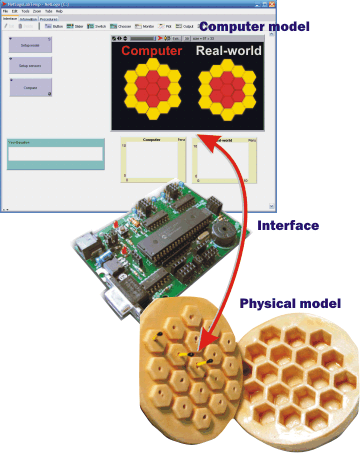NetLogoLab
Project Rationale
Home, Papers, Models, Rationale

What do we obtain from “going out to the world” as a platform for learning? The multiple aspects of this experience have been explored by different schools of thought in education. John Dewey (1916) was one of the first to emphasize the importance of connecting school learning and real-world experiences. Critical pedagogy argued that departing from the learner’s context and previous knowledge is crucial to foster de-facto emancipating and motivating learning (Freire, 1974). Constructionist educators (Papert, 1991) posited that building personally-meaningful public artifacts is central to promote sustainable and deep learner engagement. However, critics of such pedagogies would argue that the world might not afford the necessary information and opportunities for students to learn the ‘official’ school content: One cannot make sure that acid-base reactions, for instance, are out there situated in the world.
While concurring with claims about the relevance of the learner’s context, background, and concrete experiences for education design, we acknowledge that the current tools for scientific exploration available for students limit the kind and complexity of their real-world investigations. Thus, we submit that the disconnect between what one can learn in a fully situated environment and the more traditional school content is due, perhaps, to the lack of appropriate tools to ‘dissect’ reality to the appropriate level of analysis. Even if, by definition, Physics, Chemistry, and Biology are ‘out-there’ in the world, most phenomena are invisible to human vision and time scale. Many patterns in nature are too long, too fast, too small, or too large for learners to extract and understand their underlying structures. Canonical examples are weather behavior, chemical reactions, housing and traffic pattern, particle physics, and population ecology. We need, thus, new technological tools which foreground and unveil the deep structures of such phenomena. In this paper, our focus will be hybrid modeling, a framework for scientific exploration and modeling which merges two types of educational technologies commonly used (separately) in schools. The first kind is robotics and electronic sensing (Martin, 2000), which makes possible a wide range of experimental activities in the real world. The second technology is multi-agent-based simulation, which enable learners to create models to understand complex social and natural phenomena departing from very simple behaviors embedded into elementary computational agents (Wilensky & Reisman, in press; Wilensky & Resnick, 1995).
This research project, by linking the two technologies, attempts to simultaneously broaden the possibilities of situated investigation and ground computer modeling with real-world validation. For that goal, we are developing software and hardware tools to bridge computer models and sensing in real time (see the Models page). Typically, students build a computer model of a particular phenomenon, such as heat transfer, and a sensor-equipped physical device. These are connected by an analog-to-digital interface. Students are able to run their computer models in tandem with the physical apparatus, comparing the outcomes of both, and debugging their model until it matches the real-world data. We are currently building systems for 'hybrid' explorations in heat transfer, gas laws, acid-based and oscillating reactions, and Materials Science.
We are conducting a case study comparing the artifacts generated by undergraduate and graduate students in two distinct conditions. In the first condition, students created multi-agent-based models with no sensors. In the second situation, another group of students built hybrid models with sensors. All students built their models as an assignment in an 'Educational Design' class. Based on our analysis of their artifacts and interviews, we are identifying the learning gains of hybrid, sensor-equipped models, as well as determining to what extent this approach can effectively expand the possibilities of situated investigation.